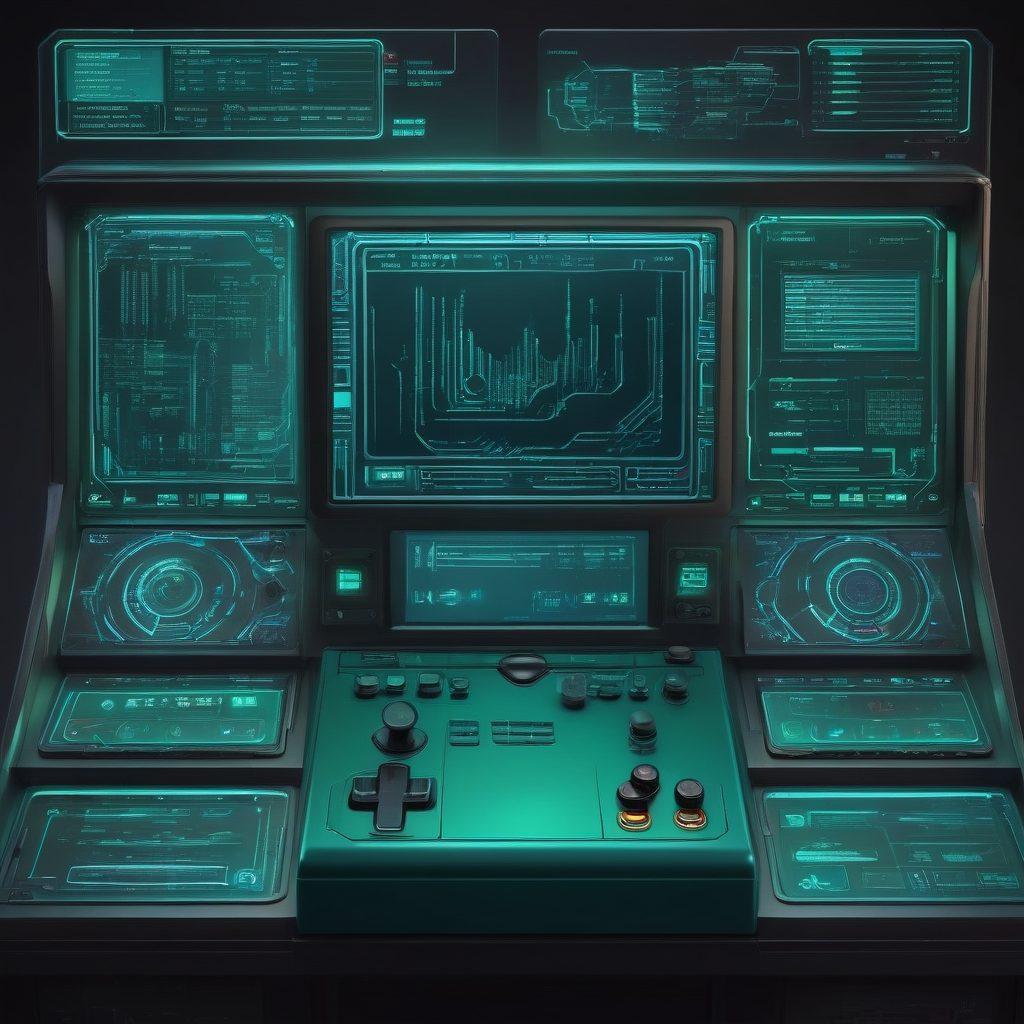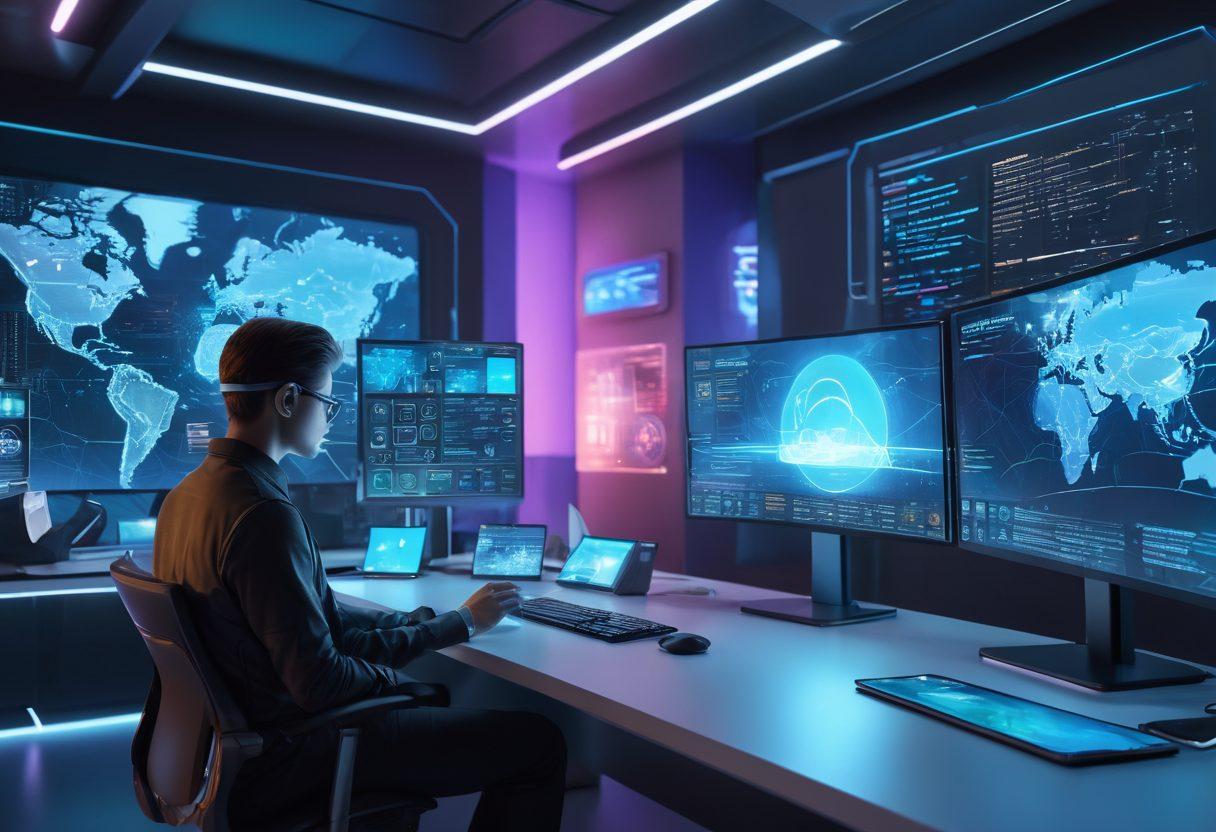Unleashing Power: The Ultimate Guide to Emulators and Virtual Machines for Seamless Simulation
In today's fast-paced digital world, the power of virtualization has become a magic wand for developers and tech enthusiasts alike. Imagine creating a safe, controlled environment where you can test new applications without the fear of crashing your main system. This is where emulators and virtual machines step in! From hardware to software, these wonders enable flawless simulations, enhancing everything from game development to software testing. So, what makes mastering virtualization so essential in this era? Let’s dive deeper into the realm of emulators and discover how to harness their power, transforming your testing experience into a seamless journey.
To understand the significance of emulators, let’s start with a simple question: Have you ever tried running a classic game on your modern computer? Chances are, you’ve come across a game emulator that allows you to relive those nostalgic moments. But emulation goes beyond just gaming. A software emulator mimics the functionality of one system on another, allowing developers to run applications in a test environment that replicates the conditions of the end-user’s device. By utilizing a system emulator, developers can ensure that their software runs flawlessly across multiple operating systems, creating a robust user experience and eliminating those pesky compatibility issues.
Moreover, when it comes to virtualization, the terms might seem overwhelming, but understanding them can unlock incredible opportunities. A virtual machine (VM) acts like a complete computer within your hardware, running its own operating system and applications. It creates a sandbox for experimentation, perfect for debugging complex applications or running prototypes safely. Have you ever wished to test software without the risk of affecting your main system? That’s the beauty of a VM! With the ability to create multiple instances of operating systems, virtualization lets you build and tear down environments without any real-world consequences.
Now, let’s think about developers working on intricate systems and software. Incorporating a hardware emulator allows them to simulate the workings of physical devices, enabling them to test applications designed for specific platforms without needing to own each piece of hardware. This means your application emulator can imitate the response of a smartphone or tablet right from your desktop! And for software that requires advanced functions—like a game emulator for running classic arcade games—the impact is even more significant. Imagine creating a rich graphics-heavy game and being able to test it across various devices without endless resources. This not only saves time and money but also makes game development much more accessible!
As you explore the possibilities of virtualization and emulation, remember their role isn't just limited to developers. Whether you’re a student wanting to learn programming or a curious techie looking to experiment with different OS features, mastering these tools opens new doors. With platforms offering easy access to emulation software, why not take the plunge? Step into a world of creativity where you can build test environments tailored to your needs! So, remember this mantra: 'Emulation is the art of creating possibilities!' Get started today, experiment fearlessly, and witness the flawless simulations only emulators can provide.
From Game Emulators to Virtual Machines: Unlocking Seamless Simulation Solutions
Picture this: you’re ready to dive into your favorite classic game, but can’t find your old console anywhere. Or maybe you’re a developer wanting to test out software on various operating systems without the hassle of managing multiple devices. This is where emulators and virtual machines step in, revolutionizing the way we think about simulation software. By creating a bridge between different platforms, these tools allow us to unlock new experiences and functionalities without the limitations of our physical devices. So sit back, grab a snack, and let’s explore the world of emulators and virtual machines, and how they can transform your experience.
Have you ever wished you could run your favorite retro game on your modern PC? Enter the game emulator, a type of software emulator designed specifically to mimic the operations of older gaming consoles. It’s fascinating how platforms that seemed to be lost in time can be revived with just a few clicks. Imagine this: sitting in your cozy chair, nostalgia washing over you as you play Super Mario Bros. or Sonic the Hedgehog—all thanks to the magic of emulation. And it’s not just games; the application emulator allows software from one operating system to run on another, opening doors to endless possibilities for developers and end-users alike.
Let’s not forget the power of virtual machines. A virtual machine acts as a sandbox that allows you to run an entire operating system within your existing one. Think of it as a safe space where you can tinker and explore without the fear of breaking your primary system. Whether you're testing new software, experimenting with malware in a controlled environment, or running a completely different OS without the hardware, a virtual machine is your best friend. With tools designed for virtualization, you can easily create a robust test environment that mimics multiple devices—and that can save you a lot of time and headaches in the long run. Isn't it fascinating to think about testing something so complex without the physical constraints of hardware?
As you dive deeper into the world of emulators and virtual machines, you might stumble upon terms like debugger, system emulator, and platform emulator. It's essential to understand these concepts if you want to harness their full potential. A debugger can help you identify and fix errors in your code, ensuring your software runs smoothly in any environment. Meanwhile, a hardware emulator replicates the behavior of physical devices, allowing you to accurately test how your software interacts with components — all without needing the actual hardware. Imagine being able to develop cutting-edge applications without the expense and logistics of acquiring numerous devices. The convenience of having a hardware emulator is immense, especially for programmers.
In a world driven by technology, the importance of seamless simulation solutions cannot be overstated. The ability to switch between a game emulator and a virtual machine or utilize a device emulator and application emulator provides flexibility for both developers and gamers. So, the next time you think about whether to dig out your old console or fire up that VM you’ve got only a few clicks away, remember the sheer power at your fingertips. With emulators and virtual machines, you’re not just playing games or testing applications; you’re participating in a future where the limitations of hardware no longer bind us. What will you choose to explore next with these amazing tools?
Building Your Test Environment: The Essential Role of Emulators and Virtual Machines
In the world of technology, the ability to simulate different environments can be a game-changer. Picture this: you're developing the next big app, and it needs to be tested across various platforms. How do you ensure it works seamlessly on all of them? Enter **emulators** and **virtual machines**, the unsung heroes of software development. Whether you're running a game emulator to test your latest creation or using a system emulator for debugging, these tools provide an invaluable test environment that maintains integrity and accuracy in your simulations.
At their core, both **emulators** and **virtual machines** serve to replicate environments, but they do it in distinct ways. Emulators create a **sandbox** - a secure virtual space where your programs can run just like they would on their intended device. Think of a **device emulator** that mimics a mobile phone's experience for your app testing. In contrast, virtual machines allow you to run an entire operating system as a guest on your current system. It's like creating a mini-computer within your computer! Isn’t it fascinating how virtualization enables us to explore multiple coding frameworks without risking our primary setup?
Let’s imagine a scenario: You’re designing software for an outdated operating system that your client still uses; do you dig out old hardware to set it up? Not at all! A **hardware emulator** can mimic that environment without the physical constraints. With virtualization technology, you’re not just limited to one test environment; you can create multiple configurations with various setups. You have the power to replicate any machine and environment. The possibilities are endless—where would you like to take your simulations today?
As you dive deeper into the world of **simulation software**, consider how **application emulators** can enhance your development workflow. Let’s say you’re developing a game; a game emulator can showcase your work on the intended platform, giving you insight into performance and user experience. With tools like these, developers can nip potential issues in the bud, ultimately saving time and reducing costs. What other tools could you complement your testing environment with?
Building your ideal **test environment** should come with a strategy. Evaluate your needs—are you focused on application performance with a program emulator, or are you looking to stress-test your game? Once you've identified your priorities, you can select the appropriate emulator or virtual machine that fits like a glove. Your journey into the world of **emulation** is not just about the tools; it's about how you harness their power to propel your creativity and efficiency. With these tools in your arsenal, are you ready to redefine the boundaries of what your software can achieve?


